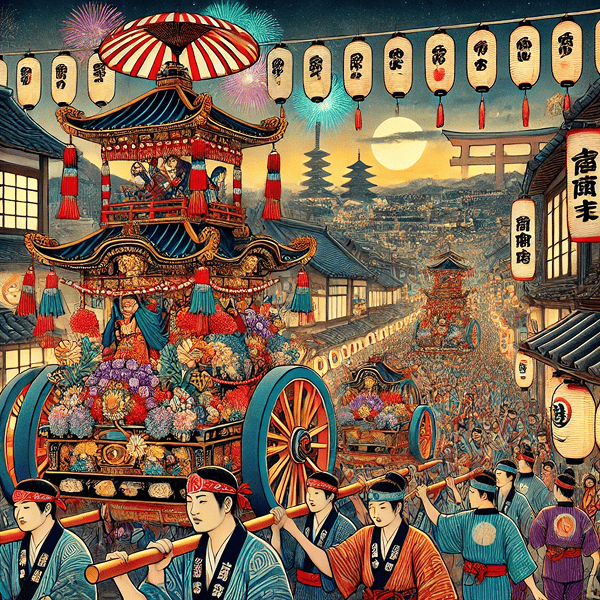Japanese Festivals: Celebrating Culture, Community, and the Seasons

Contents
Drums echo in the streets, lanterns light the night, and the air fills with the scent of sizzling street food—welcome to a Japanese festival, where ancient tradition meets joyful celebration.
Far more than mere entertainment, matsuri are vibrant expressions of Japan’s spiritual roots, seasonal rhythms, and community life. From solemn rituals to playful dances, each festival weaves the old and the new into a living tapestry of culture, connection, and joy.
Ancient Origins and Spiritual Purpose
Many Japanese festivals originated from ancient Shinto and Buddhist rituals, deeply rooted in agricultural practices and nature worship. In a country where rice farming was once the center of life, festivals often serve to pray for a good harvest, give thanks to the gods, and celebrate the changing of the seasons. Typical examples include:
- Spring planting festivals, which mark the beginning of the farming season
- Autumn harvest festivals, where people express gratitude for a bountiful crop
These events preserve a spiritual connection between people, nature, and the divine.
Strengthening Community Through Matsuri
Matsuri are also powerful tools for building community unity and cooperation. Preparing for a festival often involves weeks of teamwork among neighbors, local groups, and volunteers. Activities such as:
- Carrying the mikoshi (portable shrine)
- Organizing parades or floats
- Wearing traditional costumes
encourage collaboration, shared pride, and intergenerational bonding.
Key Elements: Mikoshi, Food Stalls, and Festive Energy
A defining feature of many Japanese festivals is the mikoshi procession, where a shrine believed to house a deity is paraded through the streets. The energetic movement and chanting of the carriers, combined with cheers from spectators, create an electrifying atmosphere.
Another major attraction is the food stalls (yatai), offering local street food like:
- Takoyaki (octopus balls)
- Yakisoba (fried noodles)
- Kakigori (shaved ice)
These stalls transform the festival grounds into a delicious and festive space for all ages.
Music and Dance: The Heartbeat of the Festival
Traditional music and dance play essential roles in setting the tone of each festival. Common elements include:
- Bon Odori (folk dance), where everyone dances in a circle, often in yukata
- Hayashi (festival music), performed with taiko drums, flutes, and bells
These performances bring people together, filling the air with rhythm and joy.
Local Pride: Regional Festivals Across Japan
Each region in Japan has its own iconic festivals that highlight local history, craftsmanship, and pride. Some of the most famous include:
- Gion Matsuri (Kyoto): Elegant floats and processions
- Tenjin Matsuri (Osaka): Boat parades and fireworks
- Kanto Matsuri (Akita): Balancing long bamboo poles with lanterns
- Asakusa Samba Carnival (Tokyo): A lively fusion of Japanese and Brazilian culture
These festivals are the cultural highlights of the year for many communities.
Blending Tradition with Modernity
While many festivals remain rooted in tradition, they are also evolving. Today’s matsuri may include:
- Contemporary music performances
- Art installations and light shows
- Cosplay and pop culture elements
This blend of old and new attracts younger audiences and keeps the festival culture vibrant and relevant in modern times.
Modern Meaning: Tourism, Economy, and Emotional Connection
In contemporary Japan, festivals are essential for:
- Promoting tourism, attracting visitors from around the world
- Boosting local economies through hospitality, food, and crafts
- Strengthening social bonds among residents
Beyond economic benefits, festivals offer emotional and spiritual renewal—a pause from daily life, a chance to reconnect with roots, and a moment of shared joy.
Conclusion: A Living Tradition of Joy and Community
Japanese festivals are not merely events—they are living expressions of culture, faith, and community spirit. Through dance, music, ritual, and celebration, matsuri continue to unite people across generations, seasons, and regions. Whether local or global, ancient or modern, each festival reflects Japan’s enduring love for tradition, nature, and togetherness.